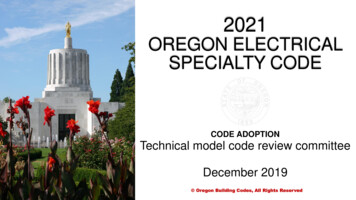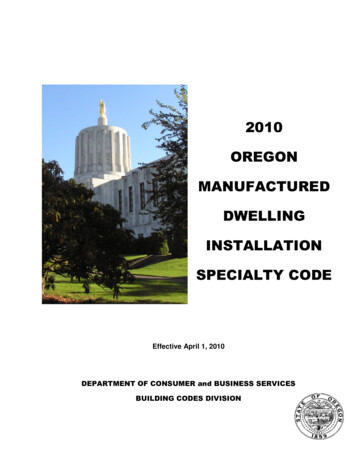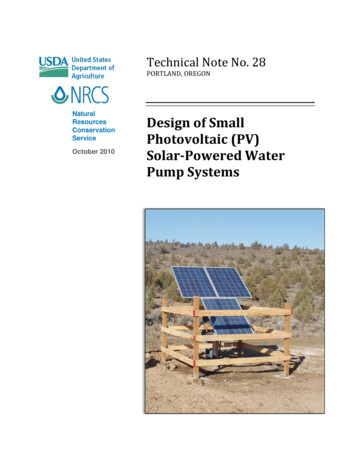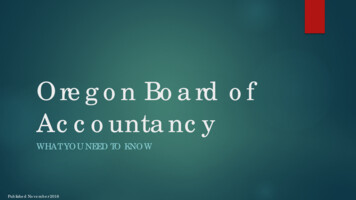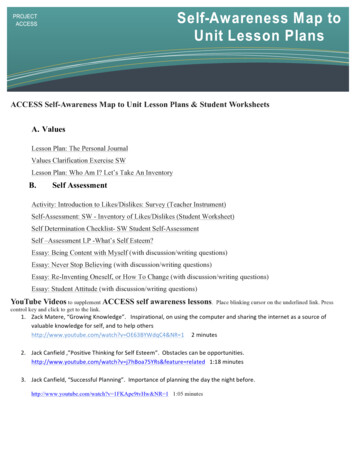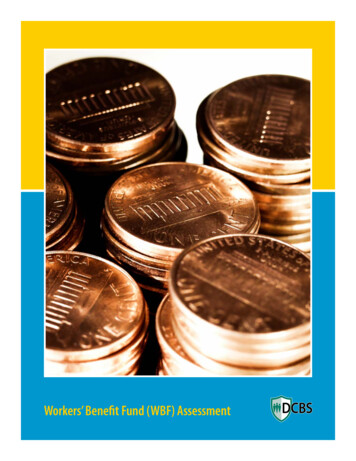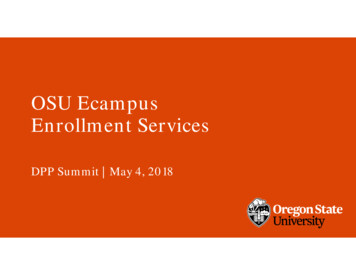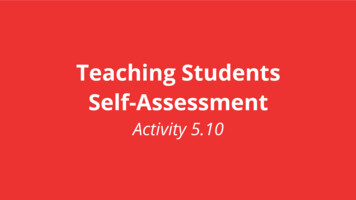
Transcription
Teaching StudentsSelf-AssessmentActivity 5.10
A major goal in formativeassessment (and in educationmore generally) is to helpstudents monitor and assesstheir own learning.
Students do not learn tomonitor or assess theirlearning on their own.
They need to be taughtstrategies for self-monitoringand self-assessment.
Ways to TeachSelf-Assessment Model the application of Success Criteria usingexamples of work Have students practice applying Success Criteriausing anonymous examples Have students practice applying Success Criteriausing their own work; first identifying success andwhen they become confident in this, ask them toidentify where the criteria have not been met,and what they need to do next or to set goals Observe and provide feedback and support asstudents self-assess Provide opportunities for students to discussand/or justify their self-assessment
Ways to TeachSelf-Assessment Learning to self-assess is not a one-shot event Teachers need to provide ongoing support forself-assessment Providing time and structures, such astemplates (see samples in Activity 5.12) anddiscussion about self-assessments, are criticalfor student success
Some Examplesof Templates
First GradeThe students in this class completethis self-assessment at the end ofeach math period.In this example, this student is ableto think about goals.“My goal forthe next weekwill be to ”
Second GradeReading goals based on self-assessmentGoal for today as a reader:“Make predictions ofwhat’s going to happennext.”Goal for today as areader: “Get throughthe tricky spots.”
Group AssessmentStudents who have been solving a mathproblem reflect on their solutions at theend of the lesson.
Other IdeasStrategies and tools that could be usedto engage students in self-assessment.
During a lesson, to checkunderstanding you could use
Smiley FacesThumbs-upHappy – I’m ready to move onThumbs up – I’ve got it!Neutral – I’m unsureThumbs sideways – I’m unsureSad – I don’t understandThumbs down – I’m stuck!Weather ReportSunny – I’m clearCloudy – I’m unclear60-second thinkPlan for 60-seconds thinking time atkey points in the lesson. Allowstudents to stop and think about howtheir learning is going at the moment.
At the end of a lesson to checklearning, you could use
1, 2, 3Concept Circle/Mind Map3 things I’ve learnt Sketch a circle with radiating lines2 questions I’ve got Write key concepts related to thework on the lines1 insight I’ve had Highlight concept they are unclearaboutIce Cream BowlEmpty – no criteria1 scoop – some criteria2 scoops – all criteriaTopping – additional criteria60-second writeAllow 60 seconds at the end of thelesson for students to write abouttheir learning. Have them note theconcepts they are clear on and theareas they need further work on.
At the completion of, and prior tosubmitting, a task to improve thework and decide on next steps, youcould try using
Checklists and RubricsDevise checklists which outline theSuccess Criteria for a task.Develop rubrics which include adescription of the levels ofperformance for a task.Feedback LadderStudents step through a process:Step 1 – read/listen/questionStep 2 – identify strengthsStep 3 – highlight areas for workStep 4 – suggest improvementsSWOT AnalysisStrengths – sound understandingWeaknesses – poor understandingOpportunities – areas for improvementThreats – obstacles to learningStudent-teacher meetingsAllow time for peer-teacher ‘check-ins’at key points to: determine progress Identify improvements to be made
Things you cantry tomorrow! Ask students to highlight the best section of theirwork and explain why they think it is the best. Have students identify where they have met each ofthe Success Criteria. Ask students to highlight the sentence and/orsection of their work that they are most pleased withand tell you why. Ask students to write one question they would likeyou to answer in your feedback. Pause during the lesson and ask students to discusshow their learning is going. Provide some sentence starters and prompts to helpstudents think about their learning and identifyareas for improvement.
Things you cantry tomorrow! Teach and model self-assessment. Provide exemplars so that students know what theyare aiming for. Ask students to identify an area where they areuncertain and what help they need. Use one of the self-assessment templates or designsome yourself. Introduce Exit cards where students write andsubmit answers to prompts such as: What was themost important thing you learned today? Whatquestions do you still have? Use 3,2,1 at the end of a lesson: 3 things I’ve learnt, 2questions I’ve got, 1 insight I’ve had.
Teaching Students Self-Assessment Activity 5.10 . A major goal in formative assessment (and in education more generally) is to help students monitor and assess their own learning. Students do not learn to monitor or a
